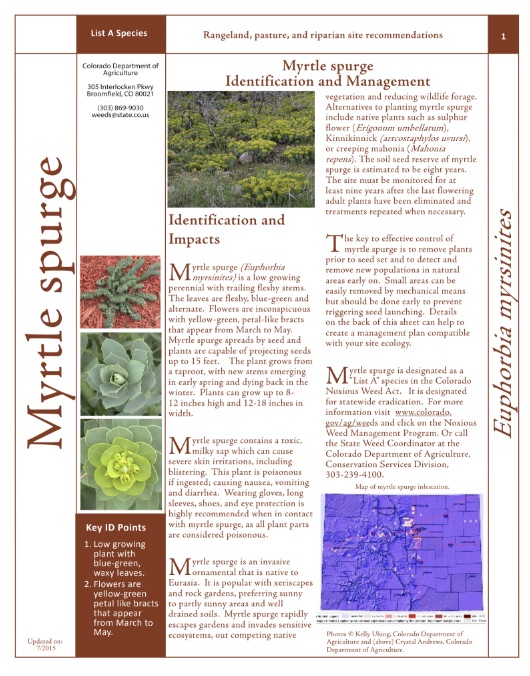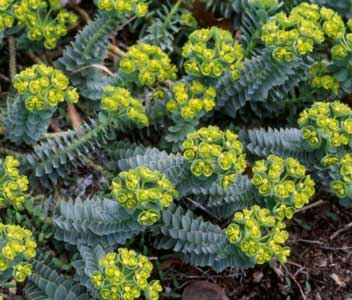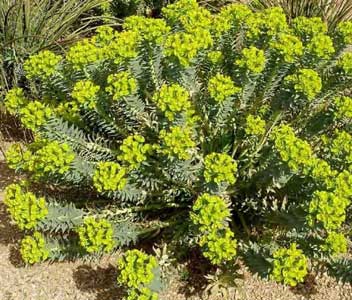Myrtle Spurge
Identification and Impacts
Myrtle spurge (Euphorbia myrsinites) is a low growing perennial with trailing fleshy stems. The leaves are fleshy, blue-green and alternate. Flowers are inconspicuous with yellow-green, petal-like bracts that appear from March to May. Myrtle spurge spreads by seed and plants are capable of projecting seeds up to 15 feet. The plant grows from a taproot, with new stems emerging in early spring and dying back in the winter. Plants can grow up to 8- 12 inches high and 12-18 inches in width.
Myrtle spurge contains a toxic, milky sap which can cause severe skin irritations, including blistering. This plant is poisonous if ingested; causing nausea, vomiting and diarrhea. Wearing gloves, long sleeves, shoes, and eye protection is highly recommended when in contact with myrtle spurge, as all plant parts are considered poisonous.
Myrtle spurge is an invasive ornamental that is native to Eurasia. It is popular with xeriscapes and rock gardens, preferring sunny to partly sunny areas and well drained soils. Myrtle spurge rapidly escapes gardens and invades sensitive ecosystems, out competing native vegetation and reducing wildlife forage. Alternatives to planting myrtle spurge include native plants such as sulphur flower (Erigonum umbellatum), Kinnikinnick (artcostaphylos uvursi), or creeping mahonia (Mahonia repens). The soil seed reserve of myrtle spurge is estimated to be eight years.

The site must be monitored for at least nine years after the last flowering adult plants have been eliminated and treatments repeated when necessary.
The key to effective control of myrtle spurge is to remove plants prior to seed set and to detect and remove new populations in natural areas early on. Small areas can be easily removed by mechanical means but should be done early to prevent triggering seed launching. Details on the back of this sheet can help to create a management plan compatible with your site ecology.
Myrtle spurge is designated as a “List A” species in the Colorado Noxious Weed Act. It is designated for statewide eradication. For more information visit www.colorado.gov/ag/weeds and click on the Noxious Weed Management Program.
Or call:
State Weed Coordinator at the Colorado Department of Agriculture,
Conservation Services Division, 303-239-4100.
FACT SHEET (click to view)






